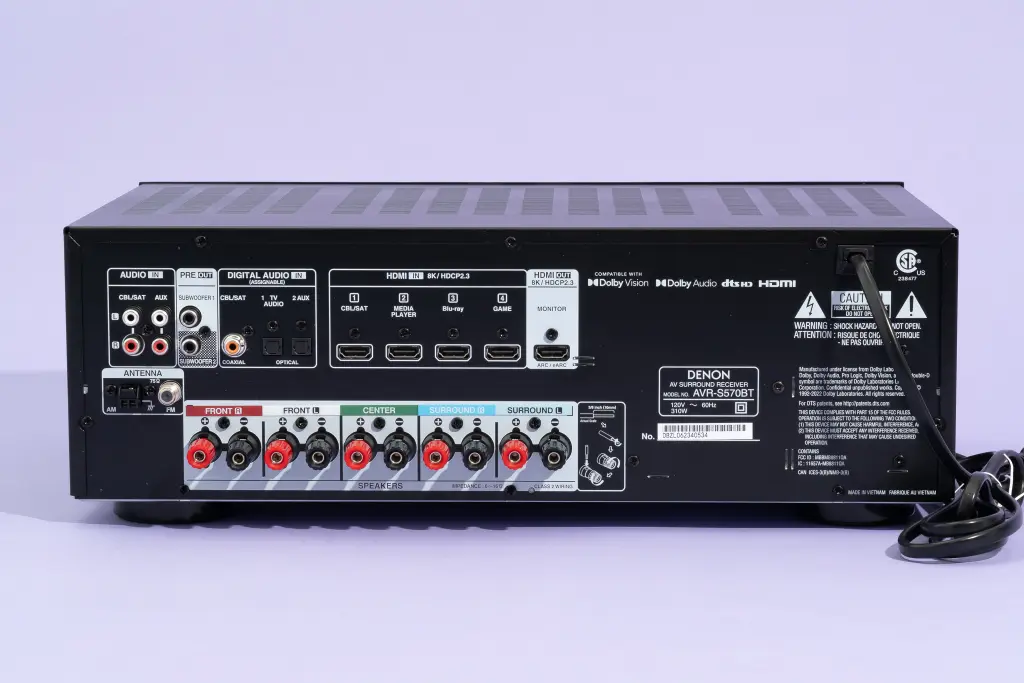In the world of home entertainment, the term AV receiver comes up again and again, yet many people are uncertain about its role. Asking the question what is an AV receiver opens the door to understanding one of the most important components in a modern audio-visual system. Without it, the experience of surround sound, immersive cinema-like audio, and seamless device integration would be far more complicated, if not impossible.
An AV receiver is essentially the hub of a home theatre or high-quality sound system. It acts as the control centre, the traffic director, and the power source all in one. At its simplest, it takes in signals from multiple sources such as Blu-ray players, gaming consoles, or streaming devices, processes those signals, amplifies them, and then sends them on to your television, speakers, or projector. This might sound straightforward, but the amount of work that goes on inside is complex and highly technical, making the receiver a truly indispensable device for anyone who values excellent sound and video performance.
The Central Role of the AV Receiver
To really understand what is an AV receiver, it helps to think about it as the brain of the home entertainment set-up. A modern living room often contains a variety of devices, from media players and smart boxes to consoles and televisions. Without something to manage all these connections, switching between them would be messy and inefficient. The AV receiver provides a single point of control.
This centralisation allows you to connect all your devices to one unit, reducing the clutter of multiple cables running into your television. More importantly, it ensures that sound and picture quality are handled to the highest possible standards. The receiver processes the digital and analogue signals, routes them to the right channels, and makes sure that what you see and hear matches the intent of the original production.
When someone asks what is an AV receiver, the answer must always include this central role as a switchboard. It not only connects and routes signals but also provides a platform where advanced processing can occur. This processing includes decoding surround sound formats, adjusting tonal balance, and even automatically calibrating the sound in your room based on speaker placement and acoustics.
The Importance of Amplification
Another major element in defining what is an AV receiver is its role as an amplifier. Speakers require power to create sound, and the small amplifiers built into televisions or compact systems are rarely strong enough to deliver the rich, dynamic range that high-quality audio demands. An AV receiver contains powerful amplifiers designed to drive multiple speakers simultaneously.
In a typical surround sound set-up, you might have five, seven, or even more speakers, each needing its own dedicated channel of amplification. The AV receiver ensures each one is supplied with the correct amount of power so that dialogue, sound effects, and background music blend together seamlessly. Without this amplification, the scale and impact of a film soundtrack or a concert recording would be dramatically reduced.
The amplifier stage of the receiver also contributes to clarity and control. Even at higher volumes, a well-designed unit can keep distortion low, ensuring that the sound remains detailed and enjoyable. This is part of the magic of what an AV receiver offers – it delivers power without compromising on finesse.
Surround Sound and Immersion
When people wonder what is an AV receiver, one of the most exciting aspects is its ability to unlock surround sound. While televisions on their own can provide stereo sound, they cannot replicate the immersive effect of audio coming from all around the listener. An AV receiver, working in conjunction with multiple speakers, makes this possible.
By decoding surround sound formats, the receiver distributes different parts of the audio signal to different speakers. Dialogue may be directed to the centre channel, ambient effects to side speakers, and deep bass to a subwoofer. This creates the illusion of being in the middle of the action. Whether it is a film scene with helicopters flying overhead, a game that positions sound based on player perspective, or a piece of music performed in a concert hall, the receiver translates the audio information in a way that feels natural and realistic.
The experience is not just about entertainment; it is about emotional engagement. A good surround sound system, powered by an AV receiver, adds intensity to every viewing. For many people, it is the defining feature that transforms an ordinary living room into a cinematic environment.
Video Processing and Switching
The question what is an AV receiver is not just about sound. Modern receivers also play a critical role in handling video. They act as a switch for multiple video sources, allowing you to connect devices such as streaming sticks, disc players, and consoles, and then output the signal to a single television or projector. This eliminates the need to constantly unplug and replug cables when switching between activities.
Some receivers also include video processing capabilities. This can involve upscaling lower-resolution content to higher resolutions so that older material looks sharper on modern high-definition or 4K displays. They may also offer features to improve colour balance or reduce noise, ensuring that the visual quality is as impressive as the sound.
In short, an AV receiver does not only centralise and manage sound but also makes video management more convenient and optimised. This dual function of audio and video handling is what makes it such a complete and vital piece of equipment in an entertainment system.
Connectivity and Modern Features
The way people use technology has evolved, and AV receivers have kept pace. When asking what is an AV receiver in today’s context, the answer includes a host of modern features that go beyond traditional inputs and outputs. Many units now include wireless connectivity, allowing streaming from phones, tablets, or laptops directly into the system. Bluetooth and Wi-Fi support make it easy to play music without physical connections.
Some models also integrate with smart home systems, voice assistants, and network-based music services. This means that the receiver is no longer just a home cinema tool but also a central hub for everyday audio use. Whether you are streaming a playlist during dinner or enjoying a film in full surround sound, the receiver adapts to the occasion.
Room calibration is another modern feature worth mentioning. Using a supplied microphone, the receiver can analyse the acoustics of your room and automatically adjust output so that sound is balanced, regardless of where the speakers are placed. This kind of technology shows how far AV receivers have advanced, transforming from simple amplifiers into sophisticated processors capable of tailoring audio to the individual environment.
Why an AV Receiver Matters
So, what is an AV receiver in practical terms for someone considering one for their home? It is the piece of equipment that ties everything together. It simplifies complex connections, enhances sound to levels that televisions alone cannot reach, and provides the immersive quality that brings films, games, and music to life.
Without a receiver, trying to recreate these experiences would involve multiple separate devices, complicated wiring, and likely inferior results. With one, everything is integrated into a single, user-friendly system. For anyone who values high-quality entertainment, an AV receiver is not a luxury but a necessity.
The phrase what is an AV receiver might sound like a simple question, but the answer reveals a device that blends technical complexity with everyday convenience. It is a product of careful engineering designed to meet the expectations of people who want their entertainment to be as engaging and lifelike as possible.
Conclusion
Understanding what is an AV receiver means appreciating its role as the cornerstone of modern home entertainment. It is the unit that receives, processes, amplifies, and distributes both audio and video signals, turning a collection of devices into a coherent system. It manages power, decodes complex audio formats, ensures video is displayed at its best, and increasingly integrates with the digital lifestyles of its users.
For anyone building a home cinema or simply wanting to get more from their entertainment set-up, the AV receiver is essential. It offers clarity, convenience, and immersion in ways that no other single device can provide. The next time someone asks what is an AV receiver, the answer is clear: it is the beating heart of home entertainment, transforming ordinary viewing into extraordinary experience.




